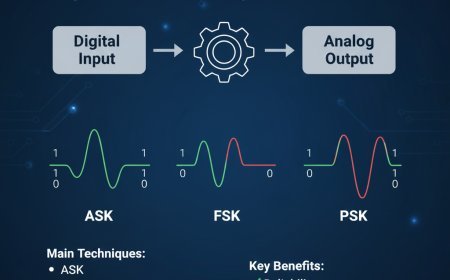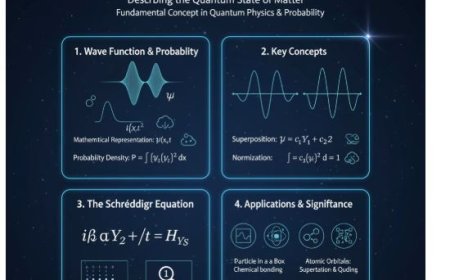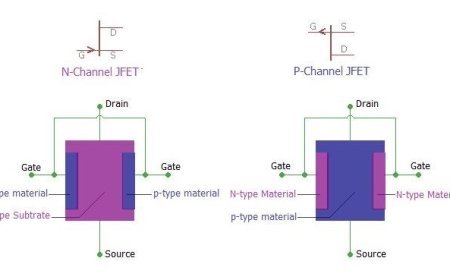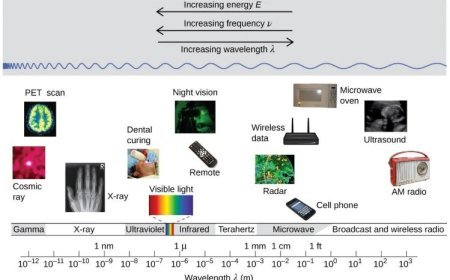Types of Basic Particles
Elementary particles are the fundamental building blocks of the universe. They include fermions (matter particles) and bosons (force carriers), which interact through four fundamental forces — gravitational, electromagnetic, weak nuclear, and strong nuclear. This article explains the classification of elementary particles, their characteristics, and their role in the Standard Model of particle physics, along with insights beyond it.
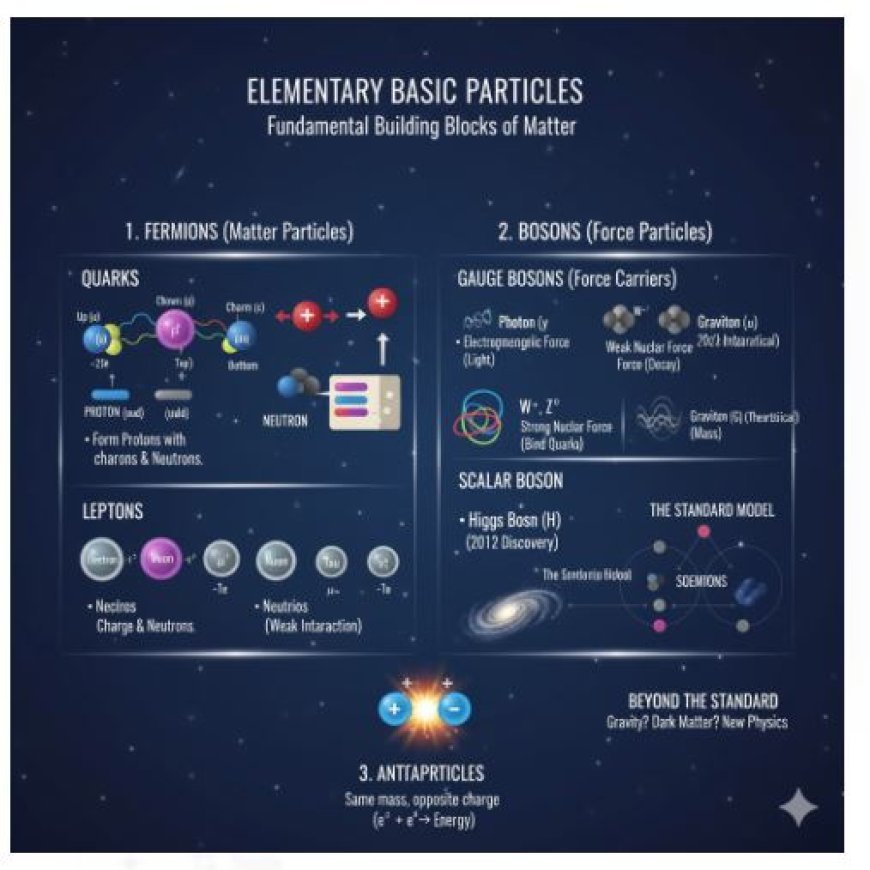
Types of Basic Particles
In particle physics, elementary particles are the fundamental units that make up everything in the world. They are basic particles that cannot be broken down into smaller parts and engage with each other using fundamental forces. Elementary particles can be sorted into different groups according to their characteristics. Below is a full description of elementary particles.
1. Fermions
Fermions are particles that follow Fermi-Dirac statistics and obey the Pauli Exclusion Principle (no two fermions can hold the same quantum state). They are the basic parts of matter.
a) Quarks
Quarks are the basic particles that combine to form protons, neutrons, and other similar particles called hadrons.
There are six types (flavors):
- Up (u)
- Down (d)
- Charm (c)
- Strange (s)
- Top (t)
- Bottom (b)
- Quarks have charges that are less than the regular electric charge.
- Up, charm, and top quarks: +2/3
- Down, strange, and bottom quarks: -1/3
- Quarks never exist alone; they always make groups to form particles like protons and neutrons.
b) Leptons
Leptons are basic particles that do not interact through strong forces, unlike quarks.
There are six kinds of leptons, which are split into two groups:
- Charged Leptons:
- Electron (e): The most well-known lepton, which is present in atoms.
- Muons (μ) and Tau (τ): Heavier types of electrons that do not last long before breaking down.
- Neutrinos:
- Tiny, harmless particles that come in three types:
- Electron neutrino (νₑ)
- Muon neutrino (νₘ)
- Tau neutrino (ντ)
- They only interact through a weak nuclear force.
2. Bosons
Bosons are particles that follow Bose-Einstein statistics and do not obey the Pauli Exclusion Principle. They help control the basic forces in the world.
a) Gauge Bosons (Force Carriers)
These particles help carry the basic forces of nature.
- Photon (γ): A particle that carries the electric force.
- It has no weight and moves at the speed of light.
- W and Z bosons:
- Responsible for the weak nuclear force, which controls processes such as radioactive decay.
- W bosons can have a positive or negative charge, but Z bosons do not have any charge.
- Gluon (g):
- Carrier of the strong nuclear force that holds quarks together inside protons, neutrons, and other hadrons.
- It has no mass but can carry a color charge, which makes it different from other force carriers.
- Graviton (theoretical):
- A theoretical particle that would carry the force of gravity.
- It is expected to have no mass, but it has not been seen in experiments.
b) Scalar Boson
- Higgs Boson (H):
- Linked to the Higgs field, which provides mass to other particles.
- Finding the Higgs boson in 2012 proved the Higgs process in the Standard Model.
3. Antiparticles
Every basic particle has an antiparticle that has the same mass but a negative charge. For example:
- The positron is the antiparticle of the electron and has a positive charge.
- The antiproton is the antiparticle of the proton and has a negative charge.
When a particle meets its antiparticle, they destroy each other and release energy.
4. Types of Interaction Classification
Elementary particles can be grouped according to the forces they deal with.
a) Electromagnetic Force
- The electromagnetic force affects particles that have electric charge, such as electrons and protons, as well as photons, which are particles of light.
b) Weak Nuclear Force
- The weak nuclear force is carried out by W and Z bosons.
- It plays a key role in events like radioactive decay.
- Leptons and quarks are part of weak interactions.
c) Strong Nuclear Force
- The strong nuclear force works with particles called gluons to hold quarks together in hadrons, which include protons and neutrons.
d) Gravitational Force
- Gravitons are theoretical particles that would carry the gravitational force and influence any object with mass or energy.
5. The Standard Model of Particle Physics
The Standard Model is the present system that explains three of the four basic forces (electromagnetic, weak, and strong) and categorizes all known elementary particles. It does not include gravity, which is explained by general relativity.
- Fermions, which include quarks and leptons, are the building blocks of matter.
- Bosons, like gauge bosons and the Higgs boson, help to carry forces.
6. Beyond the Standard Model
The Standard Model explains many things, but it also has some limits:
- Gravity is not part of this.
- The Standard Model doesn't clarify dark matter or dark energy.
- There could be other particles, like supersymmetric particles, or forces that have not been found yet.
What's Your Reaction?












